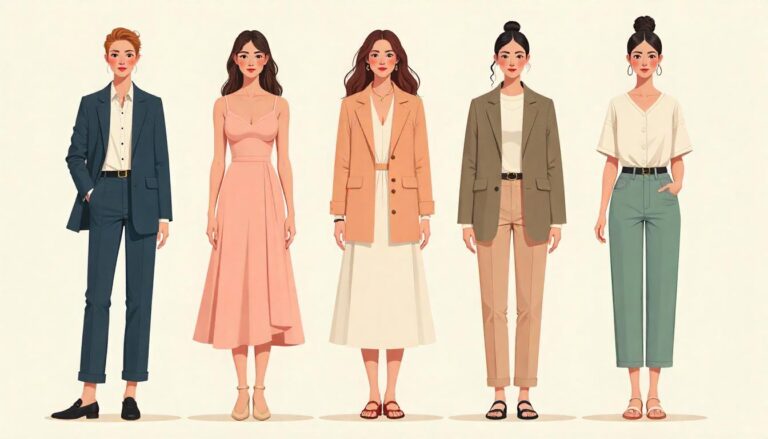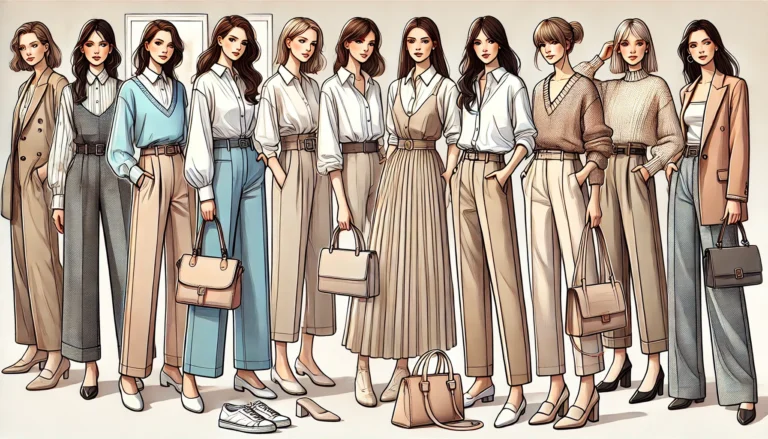Sustainable Fashion: Shaping the Future of Style and Ethics
As the world becomes increasingly aware of environmental issues, the fashion industry is undergoing a transformative shift towards sustainability. No longer just a buzzword, sustainable fashion is shaping the future of style, influencing designers, consumers, and policymakers alike. This movement is not just about eco-friendly materials but also involves ethical production, circular economy models, and conscious consumerism.
For decades, the fashion industry has been criticized for its environmental impact and labor practices. From the overuse of water and chemicals in textile production to the exploitation of workers in developing countries, the traditional fashion model has faced intense scrutiny. However, as awareness grows, so does the demand for fashion that not only looks good but also does good.
Today’s consumers are more informed and empowered than ever before. They are demanding transparency and accountability from brands, prompting a wave of innovation in sustainable practices. From biodegradable fabrics to zero-waste production techniques, the fashion industry is responding with creativity and commitment. Let’s explore some of the key trends that are driving this change.
Eco-Friendly Materials
The cornerstone of sustainable fashion is the use of eco-friendly materials. These materials are designed to reduce environmental impact and often include organic cotton, hemp, bamboo, and recycled polyester. For instance, organic cotton is grown without harmful pesticides and fertilizers, significantly reducing its environmental footprint. Similarly, recycled polyester is made from PET bottles, diverting plastic waste from landfills and oceans.
Designers are also experimenting with innovative materials such as mushroom leather, which offers a sustainable alternative to traditional leather. This biodegradable material is made from mycelium, the root structure of mushrooms, and requires far fewer resources to produce. By opting for these sustainable materials, brands are not only reducing their carbon footprint but also setting new standards for quality and durability.
Ethical Production Practices
Beyond materials, ethical production practices are a critical aspect of sustainable fashion. This involves fair wages, safe working conditions, and respect for workers’ rights. Brands like Patagonia and Everlane have set a benchmark by being transparent about their supply chains and ensuring that their workers are treated with dignity and respect.
The rise of fair trade fashion is also noteworthy. Fair trade certification ensures that farmers and workers receive fair compensation and work in safe conditions. This approach encourages sustainable farming practices and community development, ultimately leading to a more equitable and sustainable industry.
Circular Fashion
Circular fashion is an innovative concept that focuses on designing out waste and keeping products and materials in use. This approach encourages the creation of garments that are made to last, can be repaired, and eventually recycled back into the system. Brands like Eileen Fisher and Stella McCartney are pioneering this model by designing clothes that are not only stylish but also built for longevity.
Moreover, the rise of resale and rental platforms is making circular fashion more accessible to consumers. Platforms like ThredUp and Rent the Runway allow consumers to buy and rent high-quality garments at a fraction of the cost, reducing the need for fast fashion and encouraging a more sustainable approach to shopping.
Technological Innovations
Technology is playing a pivotal role in advancing sustainable fashion. From 3D printing to AI-driven design, technology is enabling brands to minimize waste and optimize resources. 3D printing, for instance, allows designers to create garments with precision, reducing material waste and production time.
Similarly, AI is being used to predict fashion trends and consumer preferences, helping brands to produce what is needed instead of overproducing. This not only reduces waste but also ensures that brands are meeting consumer demand in a sustainable way.
Consumer Awareness and Activism
The role of consumers in driving sustainable fashion cannot be overstated. As more people become aware of the environmental and social impacts of their clothing choices, they are opting for brands that align with their values. This shift in consumer behavior is encouraging brands to adopt more sustainable practices and be transparent about their processes.
Moreover, consumer activism, driven by social media, is holding brands accountable. Movements like Fashion Revolution are encouraging consumers to ask brands, “Who made my clothes?” This demand for transparency is pushing brands to reveal their supply chains and ensure that they are operating ethically and sustainably.
Challenges and Opportunities
Despite the progress, the sustainable fashion movement faces several challenges. High production costs, limited availability of sustainable materials, and the need for widespread industry change are significant hurdles. However, these challenges also present opportunities for innovation and collaboration.
Brands, consumers, and policymakers must work together to create a more sustainable fashion industry. This collaboration can lead to the development of new technologies, the adoption of best practices, and the establishment of policies that support sustainability. By addressing these challenges, the fashion industry can continue to evolve and make a positive impact on the environment and society.
In conclusion, sustainable fashion is not just a trend—it’s a revolution that is reshaping the future of style. By embracing eco-friendly materials, ethical production practices, circular fashion, and technological innovations, the industry is moving towards a more sustainable and equitable future. As consumers, we have the power to drive this change by making informed choices and supporting brands that prioritize sustainability.




